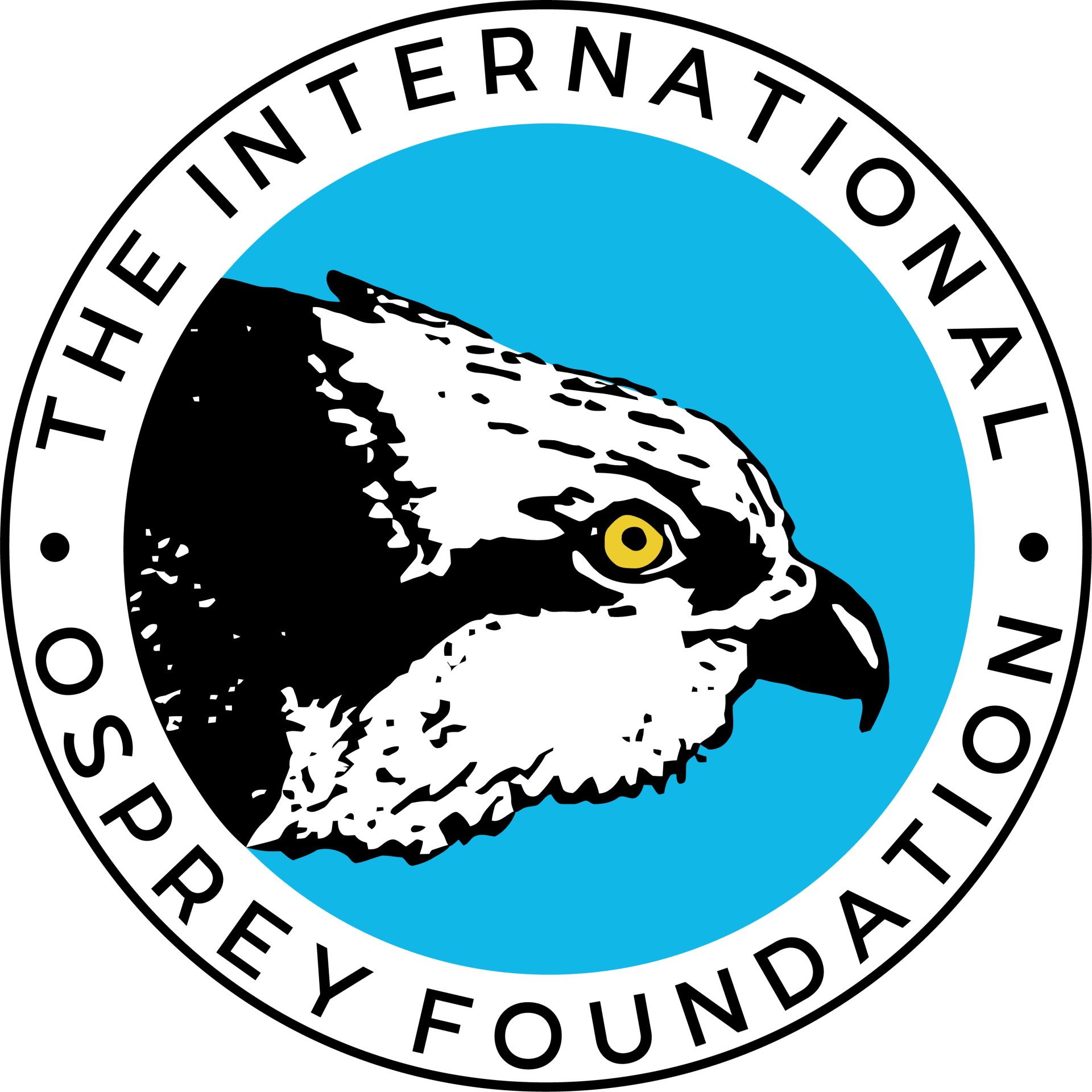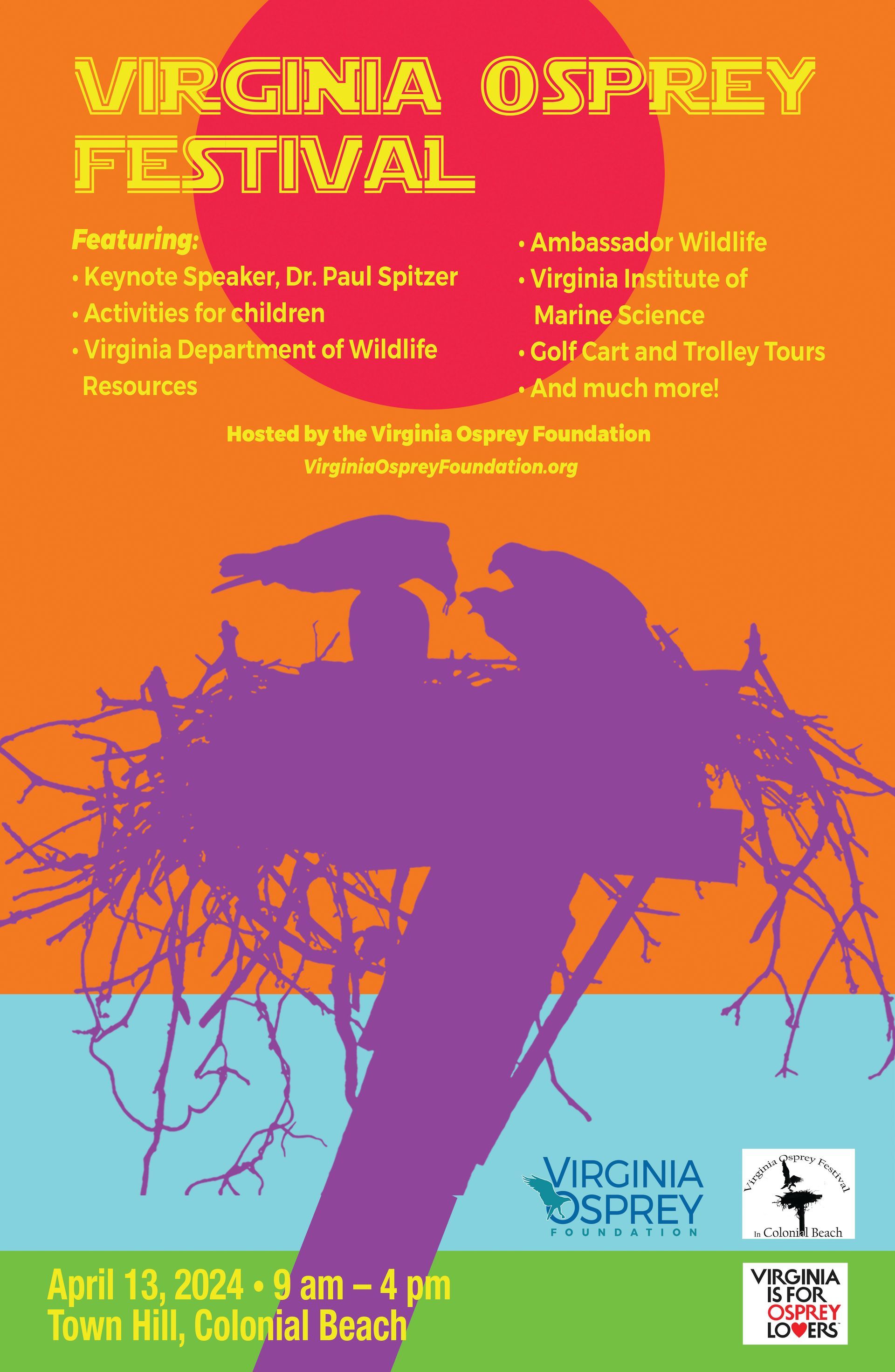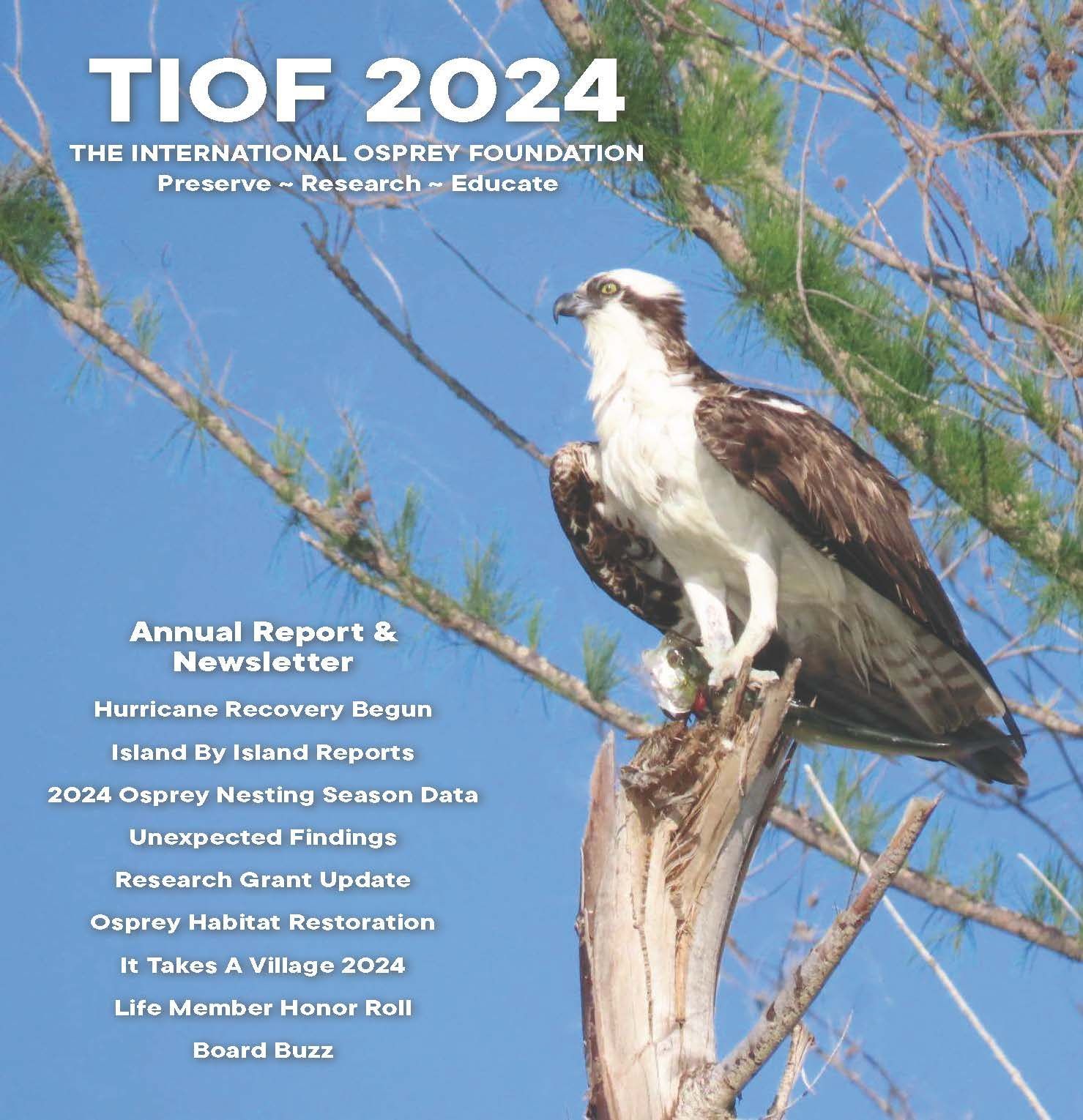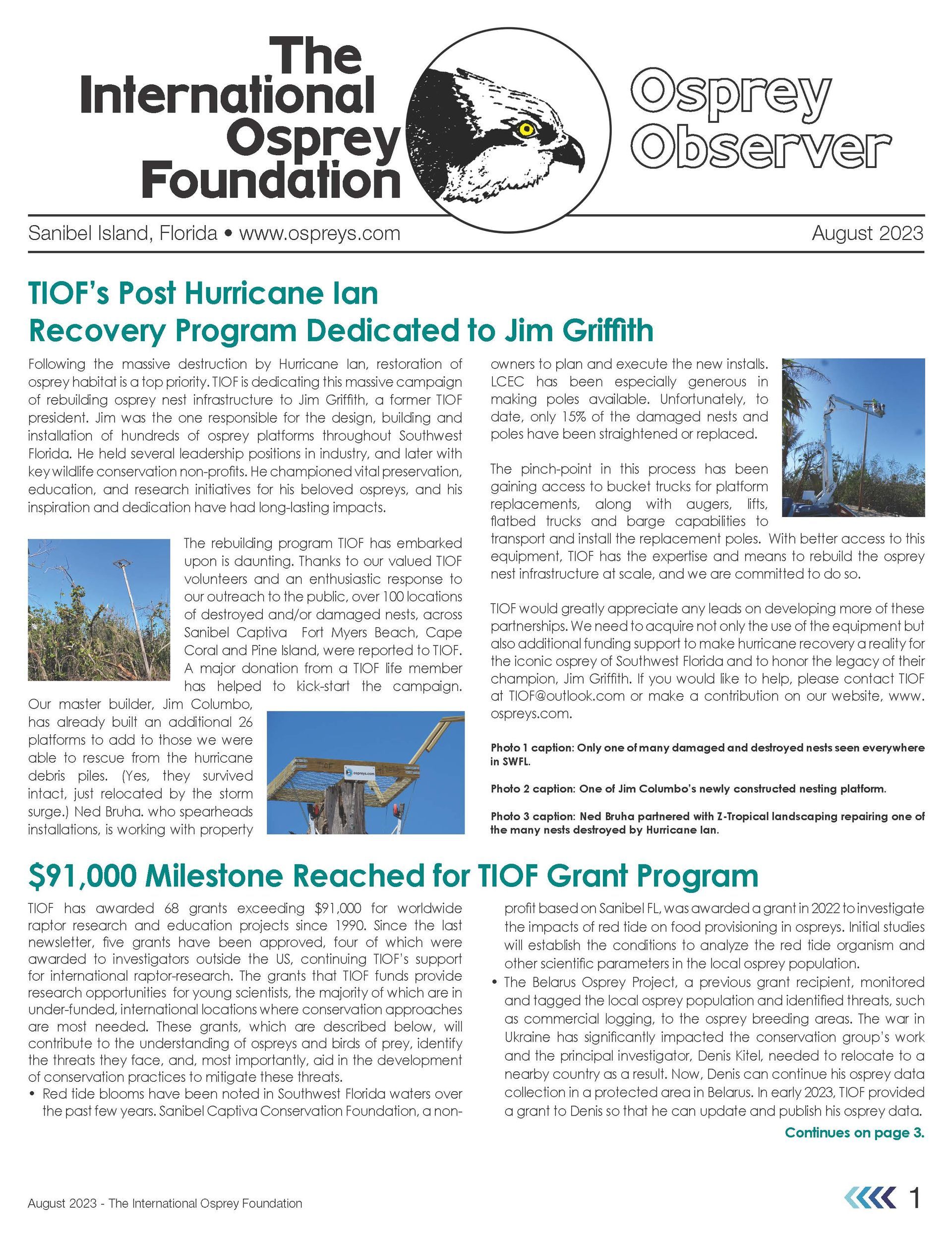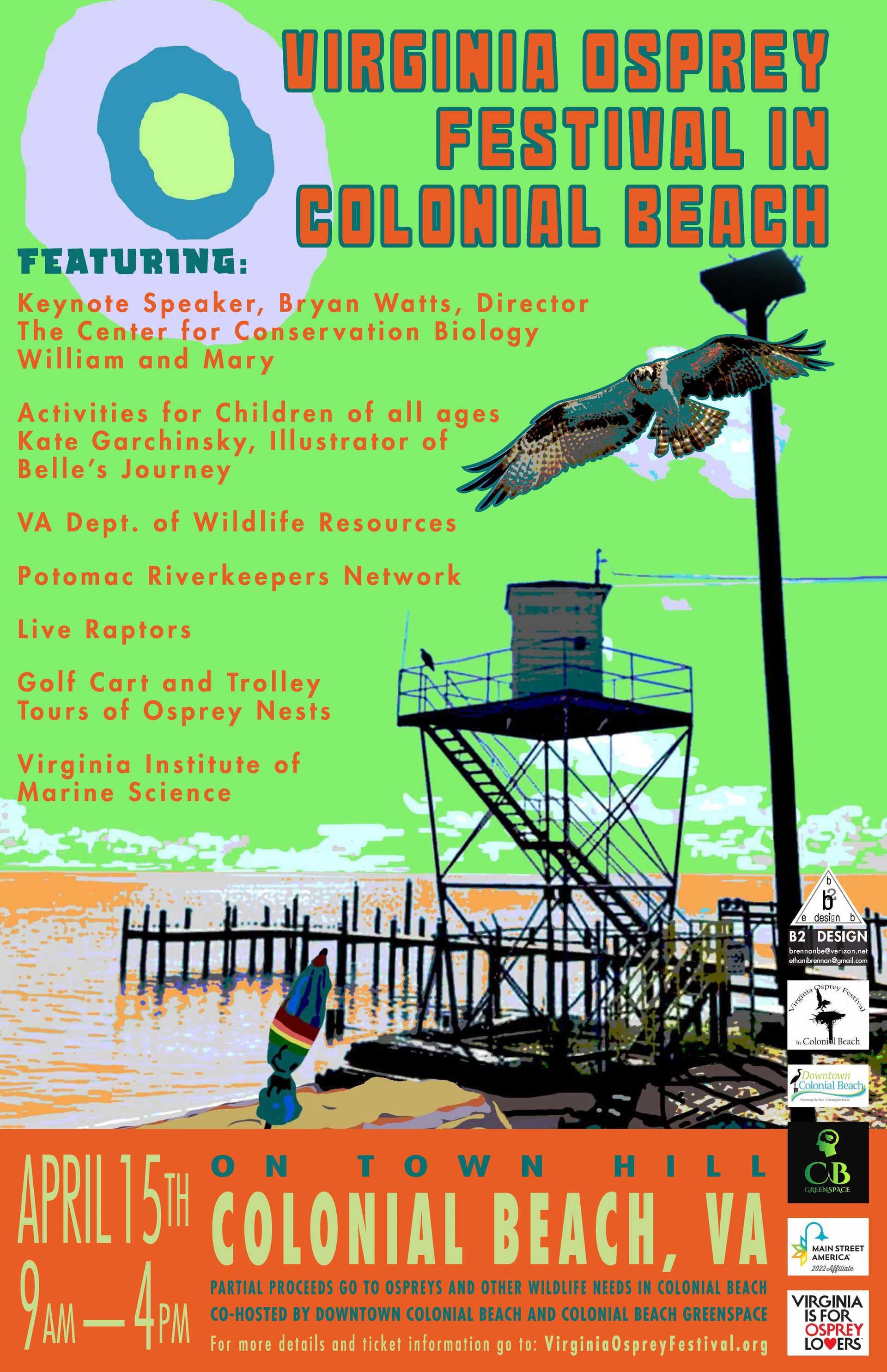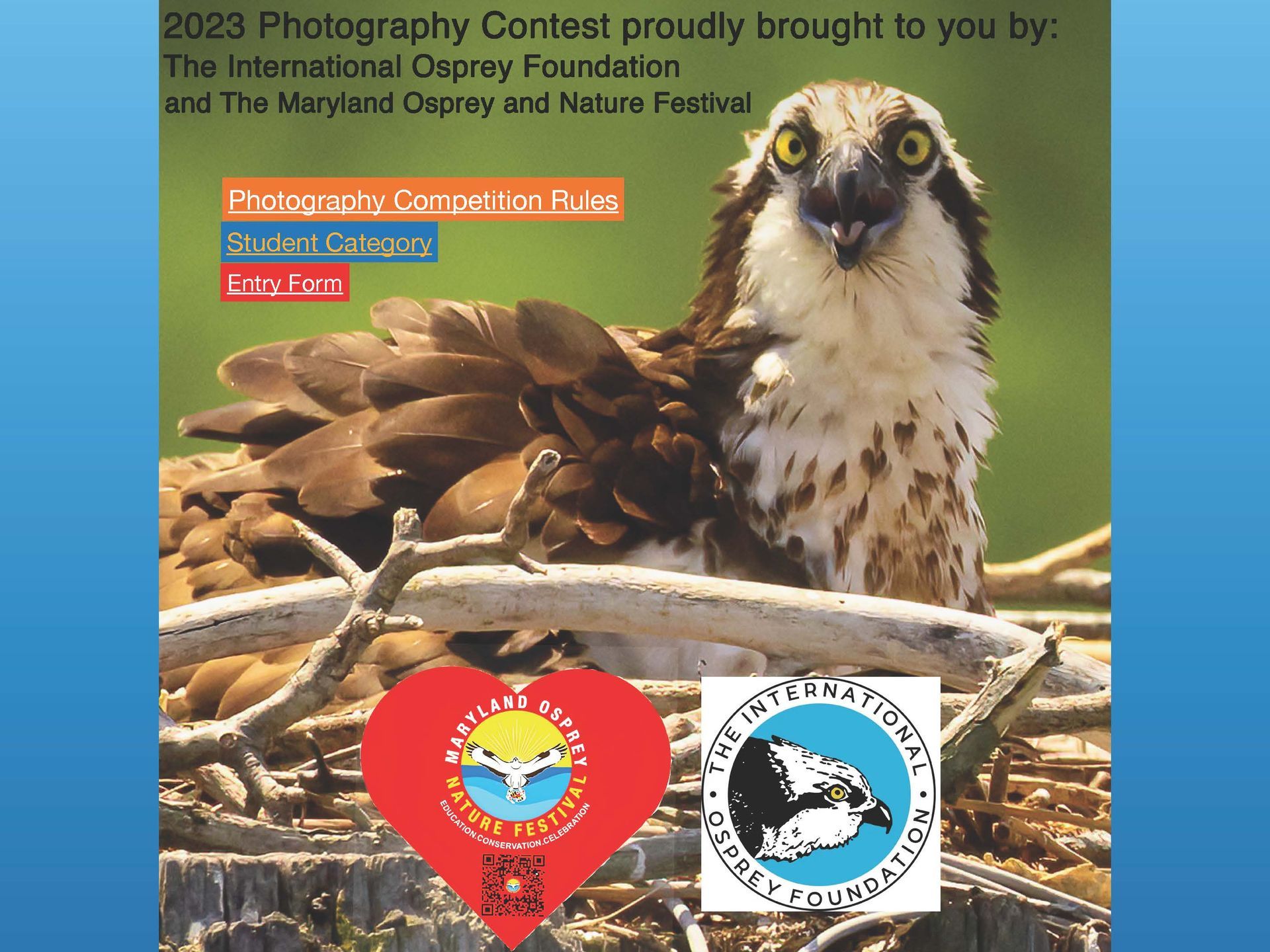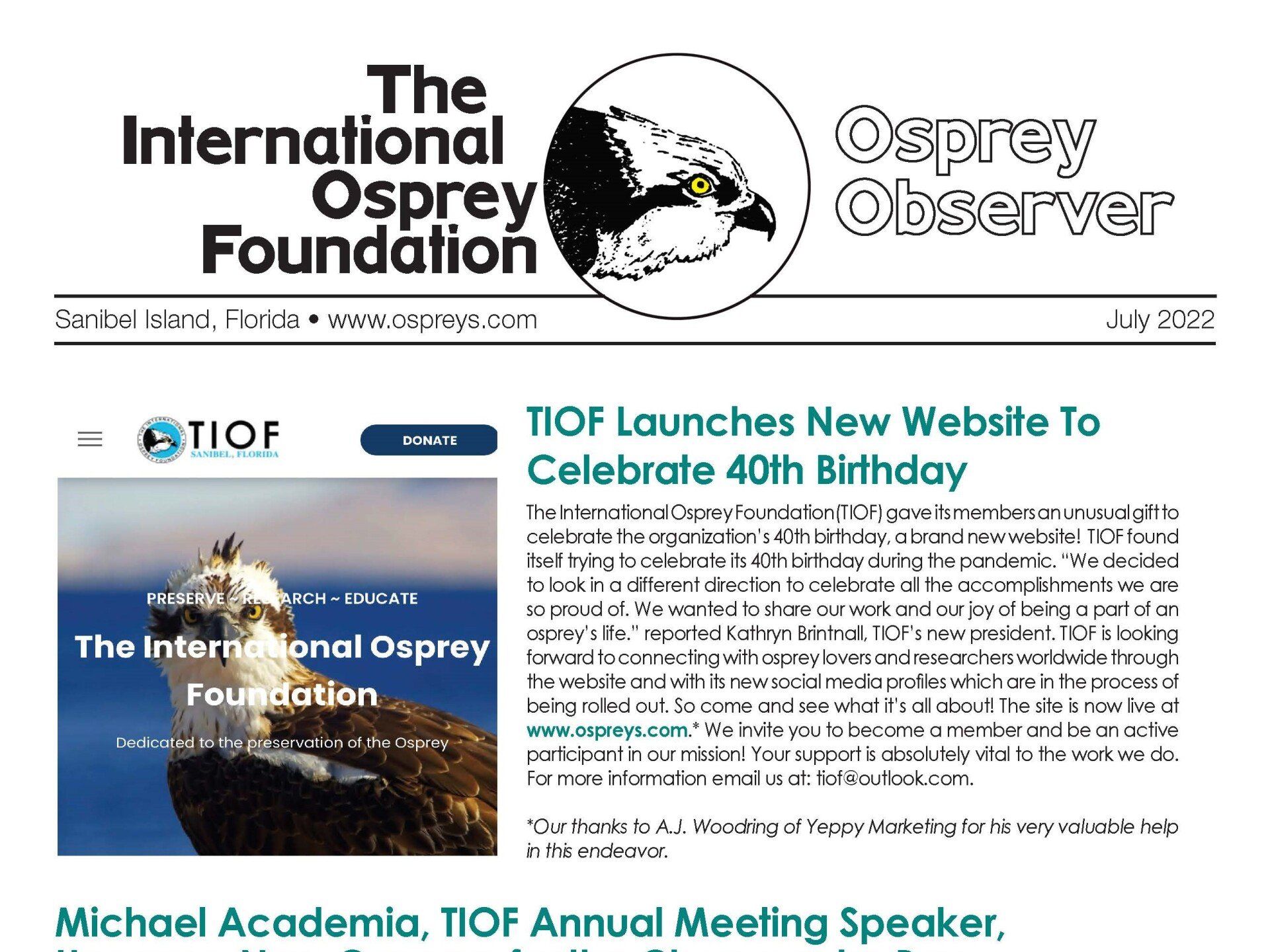Virginia Osprey Festival in Colonial Beach April 13, 2024

February 12, 2025
Pedro Lopez, a previous TIOF grant recipient, has provided an excellent video from the environmental organization BIOS CV depicting the cross-fostering of a juvenile osprey in Boa Vista in the Cape Verde Islands. Z24 was severely injured due to sibling aggression by its older and larger nestmates. Brood reduction, mediated by sibling aggression, is quite common in the Boa Vista osprey population. To aid in his survival, the near-fledging Z24, at 7 weeks old, was placed into another nest for a cross-fostering attempt. Typically, cross-fostering is done into nests with other nestlings but this was the first time that a near fledgling osprey had been transferred to a nest without nestlings. Watch the video of the successful cross-fostering of Z24!
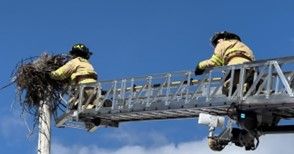
April 3, 2024
The calls started coming to TIOF fast and furious. The issue, a broken nesting pole by the Sanibel Lighthouse that was home to a very popular and productive pair of ospreys. “The birds are back!” While this was great news, the situation wasn’t. The pole was in no shape to support a huge osprey nest. But nobody told the birds that. They started building right away. Beachgoers and Sanibel residents let us know of their concerns. TIOF, along with Ned Bruha, THE WILDLIFE WHISPERER, (our main installer) and Sanibel Fire and Rescue Assistant Chief Chris Jackson started planning the installation. Firefighters Ron Petito and Arian Moore under the direction of Chief Mike Martin, got straight to work removing the nesting materials. Ned wrangled the new platform into place and added back the nesting materials while the birds kept an eye on things from the air. As the sun descended into the western sky, our ospreys re-established residency on the new platform. HOME-SWEET-HOME!

March 10, 2023
Did you know there is an International Osprey Foundation headquartered on Sanibel Island in Florida? Today, we speak with Kathryn Brintnall, president of the foundation, about ongoing efforts to protect the Osprey. We also discuss the effects of Hurricane Ian on Osprey populations. Go to the International Osprey Foundation at www.ospreys.com; go to the Sanibel-Captiva Conservation Foundation (SCCF) at https://sccf.org/; go to the J.N. Ding Darling National Refuge website at https://www.fws.gov/refuge/jn-ding-darling; go to the Clinic For The Rehabilitation of Wildlife (C.R.O.W.) website at https://crowclinic.org. Join Catherine Greenleaf, a certified wildlife rehabilitator with 20 years of experience rescuing and rehabilitating injured wildlife, for twice-monthly discussions about restoring native habitat and helping the birds in your backyard. Access the BIRD HUGGER Newsletter here: www.birdhuggerpodcast.com. Send your questions about birds and native gardening to birdhuggerpodcast@gmail.com. (PG-13) St. Dymphna Press, LLC.

October 29, 2022
The arrival of Hurricane Ian on our shores changed life as we know it on our islands for the foreseeable future. No one who has watched the news coverage of this event on TV, driven through our streets lined with debris or tried to walk the shores of our island communities will ever be the same after this. Unfortunately, this storm did not just happen to us. The wildlife displacement and environmental destruction of their habitats has been monumental. This has been especially true for Ospreys, our neighbors who nest on our highest trees, snags and nesting platforms. Southwest Florida, especially the island communities are some of the most significant osprey nesting areas in the western hemisphere. Florida native ospreys as well as a large migrating population of these fish-eating raptors make their homes on our islands each spring. Ospreys come back to the same nests every year. The birds are starting to return, but many will find no place to come home to. The International Osprey Foundation, whose monitors record nesting data for over 150+ nests in our local area, is concerned that most Osprey homes have been destroyed and that the birds will now be nesting anywhere they can, returning to inappropriate spots atop power lines and chimney tops and possibly increasing human/osprey conflict at an already stressful time for everyone. On behalf of the ospreys, for whom The International Osprey Foundation (TIOF) is their voice, we would like to ask everyone within the reach of this publication to let us know about the condition of osprey nests near you. TIOF needs to have information from the public about nesting sites, platforms and tree nests, in your neighborhoods as soon as possible, especially those that have been successful in the past. TIOF wants to know the exact location (street address or intersection) or GPS coordinates (obtainable with cell phone map apps). A description of the damage and a picture if possible, would be great!
Keep Browsing
Contact Us
Kathryn Brintnall, President
Phone:
239-763-5577
Email:
tiof@outlook.com
Address:
P.O. Box 250, Sanibel Island, FL 33957
Copyright The International Osprey Foundation | All Rights Reserved | Designed by Yeppy Marketing & Web Design
